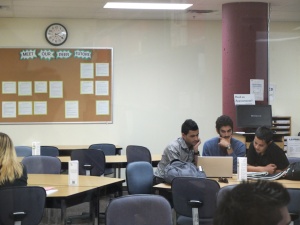The room was packed at the fourth annual Grow Conference in Vancouver on August 14. A caffeinated crowd was geared to go, so there was no time to be wasted. Daniel Burka and Jake Knapp, two design partners from Google Ventures, offered a new perspective to developing prototypes or commonly known as bad ideas with fewer repeated errors. Their session was titled “Quit wasting time on ideas that suck.”

Albert Einstein once said, “Insanity is repeating one process and expecting different results.”
So how is it possible not to waste time on something we invested so much in? Are we all insane to believe in our shiny ideas?
Not necessarily. Burka and Knapp recognizes that there is a better way to go about developing an idea that is much faster than the old fashioned step by step linear procedure and it only takes five days. And they do this by redefining the word “ship.” The traditional meaning of “ship” means getting it off the production line and into the hands of users. Then beautiful data is collected, but rarely is that the case—because often press releases, new features and other variables end up muddying the data.
Their fast-paced method begins on Monday and strictly ends on Friday. A deadline is key. Each day has a specific job. On Monday they would schedule a target audience to view their prototype on Friday, which means a prototype needs to be ready by Thursday night. So what happens in between?
Day one is all about learning and understanding the users, consumers and the product itself. By boosting the knowledge of what the customer needs and what the product needs to do, the team can then recognize which direction they need to take.
The second day is where the team needs to sketch out every possible solution. But it is not a group brainstorm; rather the team breaks up to work individually. That way by the end of the day there should be a large collection of well thought though ideas.
On the third day the team would narrow the ideas down, but not in the most democratic way, that method tends to lead to more watered down ideas. They don’t choose the ideas, but rather the concepts they feel really must be tested. Then you let the data decide.
The fourth day is all about creating the prototypes. It might sound like a limited amount of time, but first three days help significantly in planning out the building processes.
And finally Friday morning arrives and it is all about testing out the idea. Whether it is good or bad, the data will tell it all. Either way, time was not lost, a lesson was learned and sanity was retained—at least for now.










